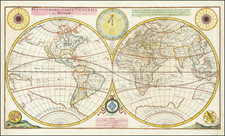A specialized world chart prepared for the Apollo 4 mission. It was created in its 1st edition in July 1967 by the United States Air Force Aeronautical Chart and Information Center (ACIC) and lithographed in August 1967. This chart is the second sheet in a two-part series and focuses on the third revolution of the Apollo 4 mission. It provides crucial information and mapping details necessary for the successful planning and execution of the mission, assisting astronauts and mission control personnel in navigating and monitoring the spacecraft's trajectory throughout its journey.
Apollo 4, launched on November 9, 1967, was the first unmanned test flight of NASA's Saturn V rocket and the Apollo spacecraft. This mission served as a crucial step in the development of the Apollo program, which aimed to land astronauts on the moon and return them safely to Earth. Apollo 4's primary objectives were to demonstrate the structural integrity and compatibility of the launch vehicle and spacecraft, as well as to evaluate the performance of the Saturn V rocket during its ascent and in various in-flight conditions. The mission also tested the spacecraft's heat shield during re-entry, as it was subjected to temperatures similar to those that would be encountered during a return from a lunar mission. The successful completion of Apollo 4 marked a significant milestone in the progress towards manned lunar missions and paved the way for subsequent Apollo flights, ultimately leading to the historic Apollo 11 moon landing in 1969.










![[Early Fascimile of the Disputed Christopher Columbus Portolan Chart]](https://storage.googleapis.com/raremaps/img/small/66588.jpg)



